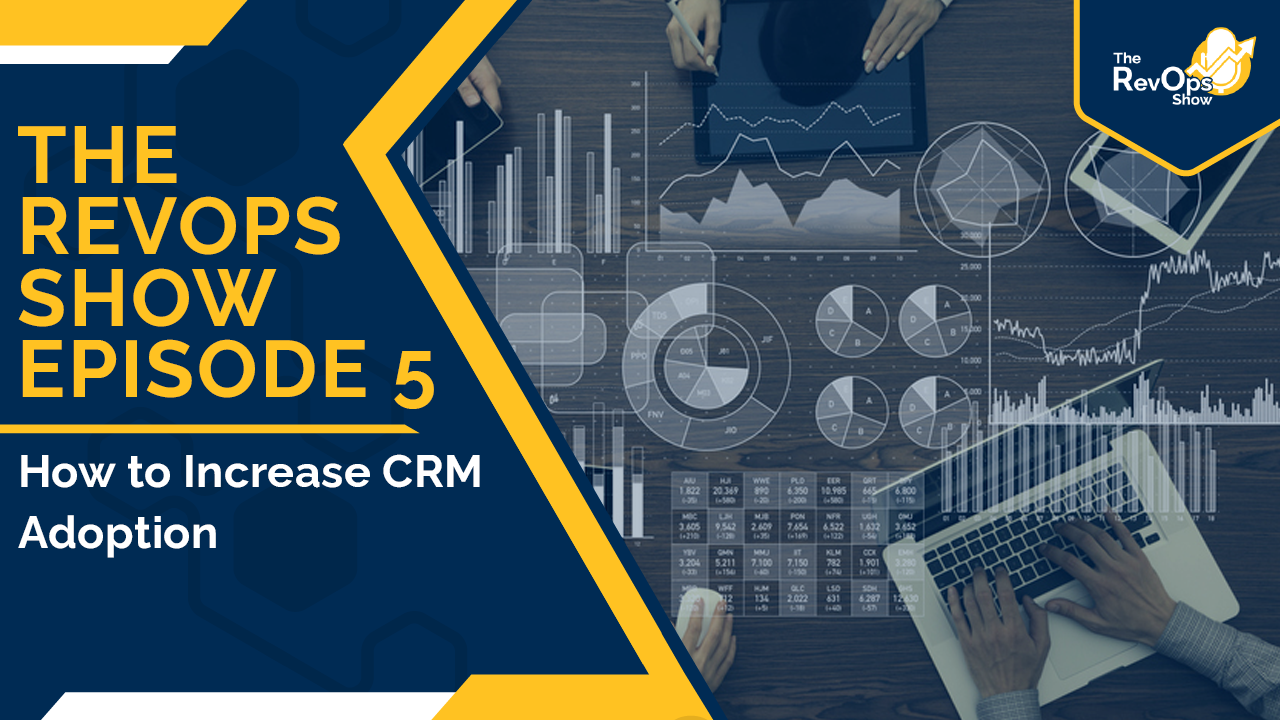Let’s talk about CRM adoption and the difficulties around adoption. This includes what the right way is to drive adoption, and whether or not you use that as a measure in an implementation.
Audio:
Video:

Additional Resources:
Show Notes:
What is so hard about adoption? Doug flips it a bit to ask, after we implement, is adoption an issue?
It can be. Where Jess finds issues is the unrealistic expectations of adoption and not defining what is meant by adoption, so it takes months to get everyone used to using the CRM. Clients can sometimes expect that their employees will automatically be using everything the way they need to be from day one.
This may seem like a CRM adoption issue, but in reality it’s a business process issue because people aren’t doing what we want them to do, in the way we want them to do it.
When you’re talking about adoption, the number one thing is you need to distinguish what adoption problem you’re having. You also need to define what adoption is, which is so situational that it’s hard to put a universal definition to it. Doug would identify that there are core activities that should be happening.
For example, Doug does not log every call, so he does not follow our protocol at Imagine (theoretically). Today he made sure to make calls from the CRM so that it could be recorded and transcribed, but most other calls that he makes he doesn’t record because if he calls from the CRM and leaves a message and that person calls right back he can’t answer the call in the CRM to have it recorded. So if the call matters he has to not answer and then call them again. If the data isn’t being used from those calls then that’s an over-engineered process.
Adoption is frequently used as a success measure for implementation of a CRM. Is that the right approach? Is that a good measure of whether or not the CRM implementation was successful?
Doug thinks it’s more of a measure of is it failing then successful. Success will be determined if the objectives that people need to hit are being met.
Adoption isn’t hard, but it’s not easy. Adoption is a by-product of good process and good implementation. First things first, stop talking about adoption. The goal isn’t use of the CRM.
Going back to the Doug not logging calls example, most people would ask what’s wrong with Doug? Rather you should ask, why isn’t he logging calls? Is there something? Is it a system issues? If you dig in and find out that he’s on the road a lot and is calling from his cell phone, there’s your answer. The next step is figuring out how you could make the process easier or how to make the process harder so that he does things the way you want him to. And does that path bring us closer or further away from our objective? It all comes down to trade-offs.
So when you’re not getting adoption, you have to ask yourself, is it a process problem, a gap in ambiguity, a conflict in the process, or an implementation problem?
When it comes to getting more people to adopt, if the rep doesn’t find value in it, they’re not going to do it. If the process is not being used, they too won’t use it. If you have an issue where 7% of your team isn’t using something, maybe it’s an adoption/people problem. If it’s 20, 30, 50, 80%, you don’t have an adoption problem, you have a process problem.
What can you do to help post-launch? More so, what do you not do after launch?
The number one thing Doug sees with poor adoption is when you try to do too much. You’re changing behaviors. Before you move onto the next step, you should get the first one locked down. You should have multiple zones of execution; you should have 3-4 launches. When you’re talking about the initial launch, you should also be talking about phase 2 and being very clear on what you need to get done for launch. Most people have the inclination that they need to put everything at launch, but you can’t have everything at launch.
If there’s one thing you take away from this episode, it’s that adoption should not be your objective, it should be the by-product of what you’re doing and you need to define it before you can measure it.
Next Steps:
-
Follow Jess, Doug & Imagine on socials for updates on the show or other insights:
-
Doug Davidoff: Twitter - @dougdavidoff | LinkedIn
-
Jess Cardenas: Twitter - @JessDCardenas | LinkedIn
-
Imagine Business Development: Twitter - @DemandCreator | LinkedIn
-
-
Subscribe to the show on Spotify & Apple Podcasts
-
Check out Let's Play RevOps on Twitch for more commentary on this topic
-
Listen to the next episode: Episode 6: CRM is Change Management - How to Succeed
